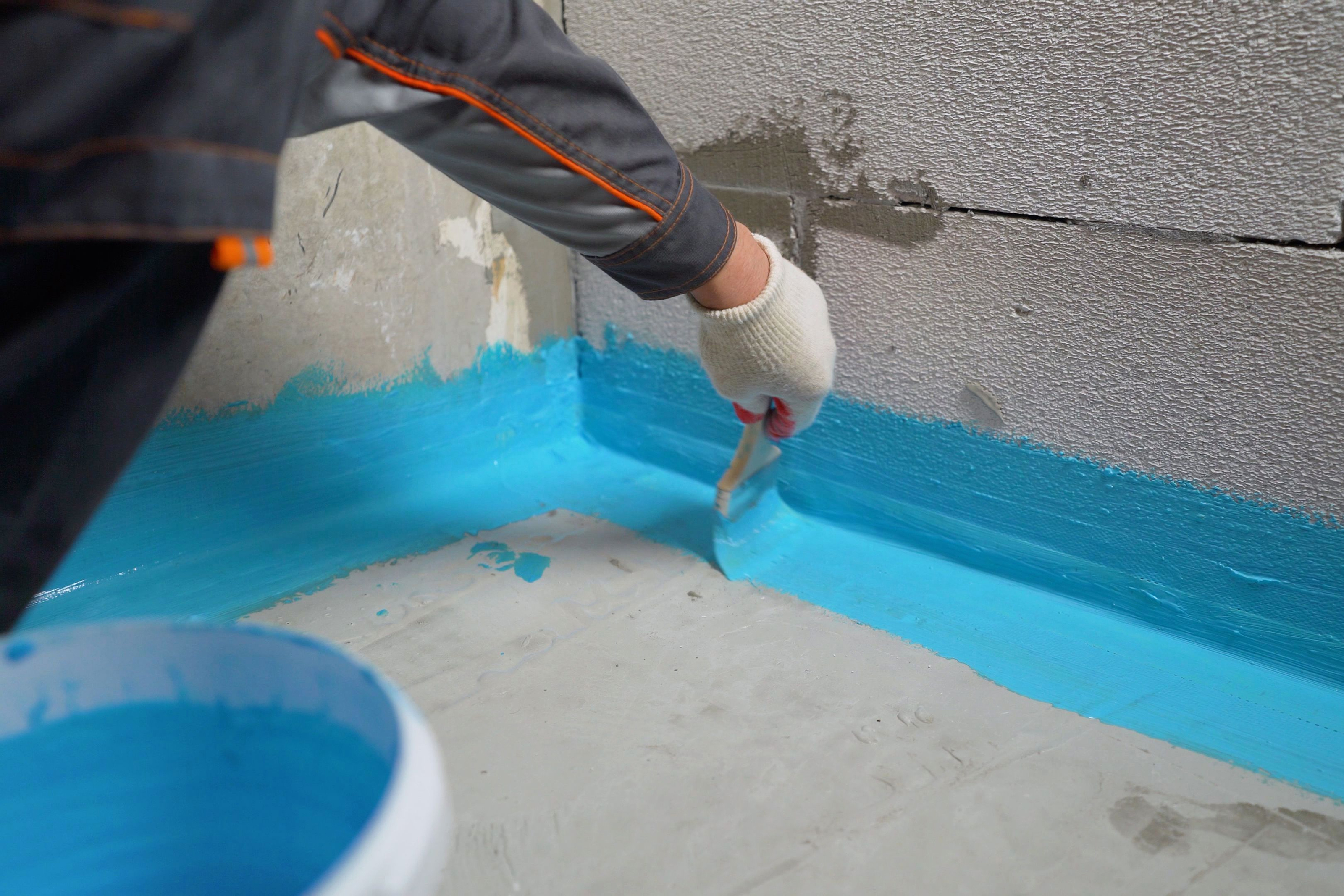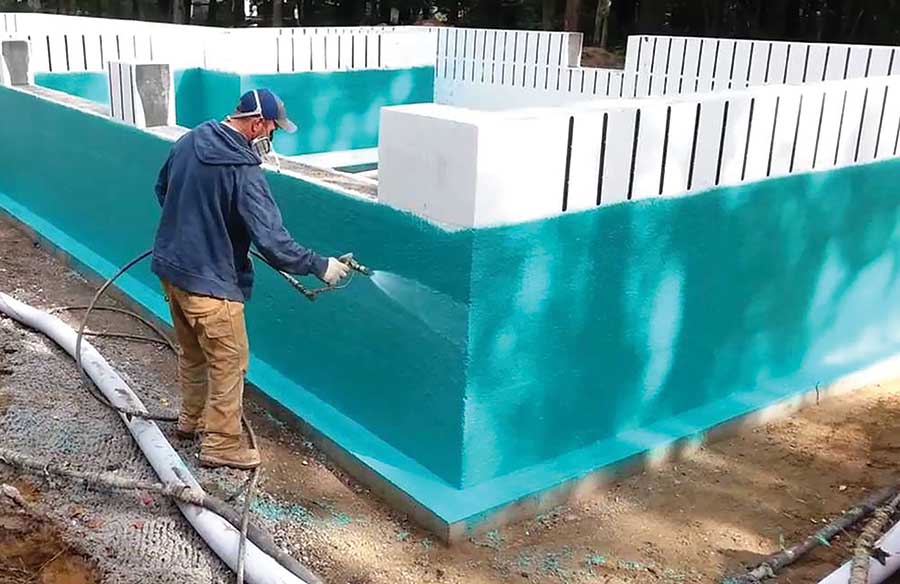Landscape drainage Omaha Ideas That Will Revive Your Outdoor Space
Wiki Article
Why Waterproofing Is Vital for Resilient Frameworks: a Comprehensive Analysis
Waterproofing plays a vital function in the long life of frameworks. It functions as a barrier versus moisture, which can result in substantial issues like mold and degeneration. Recognizing the different waterproofing approaches and their ramifications is important for property proprietors. The repercussions of ignoring this element can be extreme. Discovering these elements reveals not simply the need of waterproofing, however also its more comprehensive effect on home worth and security.Comprehending Waterproofing: Meaning and Importance
Waterproofing acts as a crucial obstacle versus moisture invasion, protecting frameworks from potential damages. It incorporates various methods and products created to stop water penetration into buildings, guaranteeing long life and capability. The relevance of waterproofing can not be overstated, as it safeguards versus a series of concerns, consisting of mold and mildew growth, damage of products, and architectural weakening.Effective waterproofing services can include membranes, coatings, and sealers, each tailored to particular environments and architectural layouts. By creating a protective layer, these remedies assist maintain a completely dry interior, which is crucial for the wellness of owners and the preservation of residential or commercial property value.Moreover, investing in waterproofing at the building phase is considerably more economical than resolving water-related concerns after they emerge. Recognizing the principles of waterproofing is important for designers, contractors, and home proprietors aiming for sturdy, durable structures that withstand the test of time and ecological obstacles.
The Impact of Water Damage on Structural Stability
Water damage presents substantial risks to architectural integrity, mainly with the development of mold and mildew. These microorganisms not just compromise interior air high quality yet likewise lead to product destruction over time. Additionally, prolonged exposure to wetness can damage architectural parts, enhancing the possibility of collapse or failing.Mold and Mildew Development
Wetness invasion positions a considerable risk to the structural integrity of structures, bring about the spreading of mold and mildew. These fungi prosper in damp settings, commonly taking origin in covert areas such as wall surface dental caries, under flooring, and in ceilings. Their development not just produces unpleasant discolorations and undesirable odors but also adds to a decrease in interior air high quality, posturing health risks to passengers. Mold and mildew and mildew can jeopardize products like wood and drywall, leading to additional dampness retention and producing a cycle of damages. Early detection and remediation are necessary to prevent extensive growth, underscoring the necessity of reliable waterproofing steps. Addressing dampness concerns without delay can protect both the health of residents and the longevity of the structure.Architectural Weakening Threats
Unrestrained wetness intrusion can result in extreme structural weakening, threatening the stability of buildings. Water damages usually influences fundamental elements, such as beam of lights, columns, and wall surfaces, causing compromised load-bearing ability. Prolonged direct exposure to dampness can trigger products like timber to rot and steel to wear away, weakening their architectural properties. This deterioration might cause splits, bowing, or also catastrophic failures if left unaddressed. Water Solutions Omaha. In addition, water infiltration can weaken the soil under foundations, causing settling or changing that more aggravates structural threats. As an outcome, applying efficient waterproofing options is essential in protecting a structure's architectural stability, stopping expensive repair services, and making sure security for residents. Appropriate maintenance and aggressive actions are necessary in alleviating these substantial risks related to water damageSorts Of Waterproofing Methods and Materials
Waterproofing approaches and materials play an essential duty in protecting structures from water damage. Trick methods consist of membrane waterproofing, which provides a physical barrier; fluid waterproofing remedies that create a smooth layer; and cementitious waterproofing options understood for their durability and ease of application. Comprehending these different techniques is vital for choosing the most ideal technique for certain building and construction demands.Membrane Waterproofing Techniques
Membrane waterproofing techniques are necessary for safeguarding structures from the destructive effects of water infiltration. These methods entail the application of water-proof membranes that create a barrier versus wetness. Both primary kinds of membrane systems are sheet membrane layers and liquid-applied membrane layers. Sheet membranes, generally made from products such as rubberized asphalt or polycarbonate, are upraised and can be turned out and stuck to surfaces. In comparison, liquid-applied membrane layers are applied as a liquid and remedy to create a seamless layer. Both types provide flexibility and resilience, satisfying different applications, including roof coverings, cellars, and structures. Proper installment and maintenance of these membrane layers guarantee long-term security, boosting the lifespan and honesty of the frameworks they guard.Liquid Waterproofing Solutions
Liquid waterproofing remedies represent a functional option to traditional membrane systems. These remedies normally entail the application of liquid finishings that heal to create a seamless, resilient obstacle versus water seepage. Various kinds of fluid waterproofing products are available, consisting of polyurethane, asphalt, and acrylic-based formulas. Each type uses one-of-a-kind residential or commercial properties, such as versatility, attachment, and UV resistance, making them suitable for varied applications. The application procedure usually involves spraying or rolling the liquid onto surfaces, permitting protection of intricate forms and information, which decreases possible weak points. Liquid waterproofing services are particularly helpful for areas with activity, such as joints and fractures, as they can fit structural changes without endangering stability, guaranteeing long-lasting security for frameworks.
Cementitious Waterproofing Options
Various cementitious waterproofing options are readily available, providing effective remedies for various building and construction demands. These systems usually contain a blend of cement, sand, and additives, making them appropriate for both interior and exterior applications. Amongst the preferred selections are crystalline waterproofing products, which react with dampness to develop a water-proof barrier within the concrete matrix. Additionally, flexible cementitious coatings supply enhanced elasticity, accommodating minor structural movements without compromising the waterproofing stability. It is likewise common to use cementitious sealers for joints and splits, making sure thorough protection against water infiltration. On the whole, cementitious waterproofing alternatives are valued for their his explanation durability, convenience of application, and compatibility with various substrates, making them a preferred selection in modern-day building and construction methods.Long-Term Cost Financial Savings Via Effective Waterproofing
Purchasing reliable waterproofing solutions can greatly lower lasting prices for building owners and programmers. By stopping water invasion, these options minimize damage to structural aspects, minimizing the need for costly repair work and maintenance in time. Waterproofing also safeguards interior surfaces and home furnishings, decreasing substitute prices and boosting the overall life-span of the property.Moreover, efficient waterproofing can result in power savings by improving insulation and minimizing humidity-related issues. This leads to lower heating & cooling costs, adding to a much more lasting financial version for building management.Additionally, the implementation of waterproofing measures can enhance building value by making certain a completely dry, safe, and resilient atmosphere. While the preliminary investment in waterproofing may seem substantial, the long-lasting monetary advantages far exceed the upfront expenses, making it a prudent decision for anyone entailed in building or residential property management.
The Duty of Waterproofing in Building Ordinance and Rules
Waterproofing plays a significant function in structure codes and policies, mirroring its significance in contemporary building techniques. These codes are developed to ensure safety, resilience, and sustainability in structures, emphasizing the requirement for effective waterproofing actions. Numerous national and local structure codes outline details demands for waterproofing materials and methods, particularly in areas susceptible to water intrusion, such as cellars and foundations.Compliance with these regulations not only shields frameworks from moisture-related damages yet also safeguards public health by stopping mold and mildew development and structural instability. Examiners typically evaluate waterproofing components during the construction process to guarantee adherence to established criteria. As climate adjustment raises the regularity of severe weather condition occasions, the function of waterproofing in building regulations is expected to evolve, potentially causing stricter guidelines. On the whole, the integration of waterproofing in governing structures underscores its essential role in accomplishing lasting, resistant structures.Instance Researches: Successful Waterproofing Solutions
Effective waterproofing remedies have been executed throughout different tasks, showcasing ingenious methods that boost structural integrity and longevity. One significant instance is the improvement of the historic Smith Tower in Seattle, where innovative membrane systems were utilized to protect the structure from water intrusion. This technique not only preserved the building's aesthetic but additionally prolonged its lifespan.In another situation, a huge industrial structure in Miami utilized crystalline waterproofing modern technology, which reacts with dampness to develop a barrier against water. This solution proved effective against the city's high humidity and hefty rainfall.Additionally, a bridge in San Francisco went through an extensive waterproofing therapy utilizing epoxy finishes, which considerably lowered upkeep prices and enhanced longevity. These study highlight the efficiency of customized waterproofing strategies in diverse atmospheres, emphasizing the significance of choosing appropriate approaches to attend to particular obstacles and guarantee the durability of structures.Ideal Practices for Implementing Waterproofing Techniques
Implementing effective waterproofing approaches calls for cautious preparation and adherence to finest practices - Basement waterproofing Omaha. It is vital to perform an extensive website analysis to identify possible locations of water access. This evaluation notifies the option of suitable products and strategies tailored to details environmental conditions. Utilizing high-quality, resilient waterproofing membranes can substantially boost protection against moisture.Additionally, appropriate setup techniques are important; guaranteeing that surfaces are tidy and without impurities advertises suitable bond. Routine maintenance checks should be scheduled to recognize any kind of indications of wear or damage, enabling timely repairs.Moreover, integrating from this source water drainage systems can successfully handle water runoff, preventing buildup around structures. Educating all employees entailed in construction concerning waterproofing demands further warranties consistency and adherence to best methods. Ultimately, an aggressive technique to waterproofing can significantly expand the life expectancy of frameworks and minimize long-term upkeep costsRegularly Asked Questions
Just How Does Waterproofing Affect Energy Performance in Buildings?
Waterproofing substantially improves power performance in buildings by stopping moisture breach. This decreases the need for cooling and heating, preserves constant interior temperature levels, and inevitably decreases energy usage, contributing to lasting sustainability and price savings.Can Waterproofing Be Applied to Existing Structures?
Waterproofing can indeed be applied to existing structures. Various approaches, such as membranes, coverings, and sealants, make it possible for homeowner to improve security versus dampness, thereby prolonging the structure's stability and minimizing possible damages gradually.What Are the Indicators of Inadequate Waterproofing?
Indicators of inadequate waterproofing include water discolorations on wall surfaces, mold development, peeling off paint, musty odors, and dampness in basements - Foundation waterproofing Omaha. These indications recommend possible architectural damage and the need for immediate attention to avoid further wear and tearHow Frequently Should Waterproofing Be Examined or Maintained?
Waterproofing should be inspected at the very least each year, especially in regions with her response heavy rains or rising and falling temperatures. Regular upkeep warranties early detection of concerns, advertising structural integrity and lengthening the life expectancy of the building.Exist Eco-Friendly Waterproofing Options Available?
Green waterproofing choices are increasingly readily available, using sustainable products such as bio-based polymers and natural sealants. These choices not just safeguard structures however also decrease ecological effect, appealing to eco mindful contractors and residential property owners.Report this wiki page